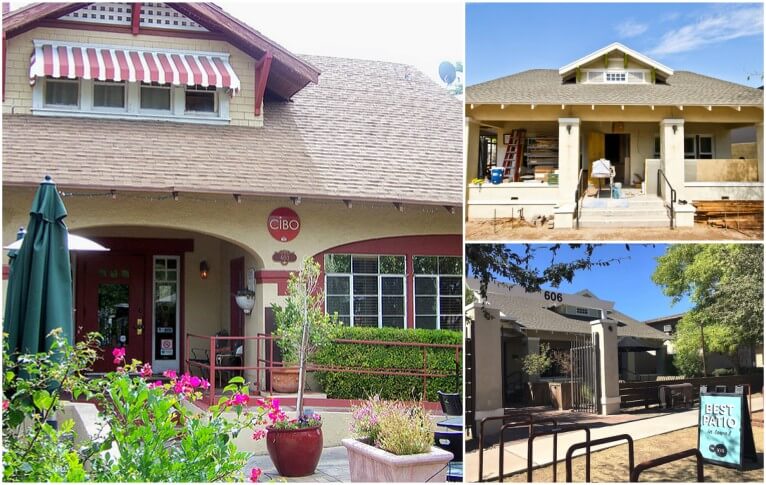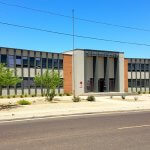The 122-year-old Clinton Campbell house was destroyed September 15, signifying the loss of yet another historic home in downtown Phoenix. There are now only 49 homes built in the 19th century in all of Phoenix.
Happening now: demolition of the Clinton Campbell House, one of 50 houses from the 1800s. pic.twitter.com/d26aRHEGOg
— Downtown PHX Journal (@dtphxjournal) September 15, 2017
“The fewer we have, the more precious they become,” said Michelle Dodds, the City of Phoenix Historic Preservation Officer.
Downtown Phoenix is experiencing rapid development, and land prices have been rising ever since the recession in 2008, according to the President of the Roosevelt Action Association Andie Abkarian.
This has created development pressure in downtown Phoenix, particularly in the area south of Roosevelt where most of these homes are located.
“The fewer we have, the more precious they become.”
— Michelle Dodds, the City of Phoenix Historic Preservation Officer
According to Abkarian, there is currently a tension between property owners and the advocates for historic preservation.
“Some land and property owners are terrified that the preservation community is going to stop them from doing what they want to do on their land,” said Abkarian.
Sometimes the land a house sits on is worth more than the house itself, and the cost is too high to restore the house, putting the property owner in a perceived economic hardship.
According to Abkarian, Proposition 207 was passed in 2006 and made it illegal to take away the property rights of developers. This proposition also made it illegal to force property owners to invest in home rehabilitation.
Although there are plenty of alternative uses for these houses, Abkarian said that some developers “don’t see the value in the structures,” even though other developers in the past have been successful in transforming these homes for new uses.
“The reason why people want to go to The Vig and they want to go to Cibo is because they’re (in) beautiful houses,” said Abkarian.

Right Cibo, Left The Vig Fillmore before and after construction.
Dan Klocke, a member of the Phoenix Historic Preservation Commission, agrees that “historic preservation is a great economic tool,” saying that some of the best businesses in downtown Phoenix are those in older buildings.
The Historic Register
Aside from adaptive uses, historic homes can be put onto the Phoenix Historic Property Register which will provide some protection from destruction.
To qualify to be on the historic register, the history and architecture of the home must be reviewed by the Phoenix Historic Preservation Office. Normally, houses 50 years or older are considered historic. Houses that are put on the local register will have a one-year demolition hold on them, which gives owners or the commission time to find other means to save the home.
A house can be on either the local register or the National Register of Historic Places. While being on the national register gives the owners some tax incentives, it provides no protection for the house.
“Some land and property owners are terrified that the preservation community is going to stop them from doing what they want to do on their land.”
— Andie Abkarian, President of the Roosevelt Action Association
According to Dodds, that gives the commission the chance to look at adaptive uses for the house such as moving the house, finding other owners who will maintain it, or turning the house into a restaurant.
Identifying Solutions
Although these efforts attempt to preserve the historic homes, there’s not enough available funding to support the rehabilitation of these old homes, according to Klocke.
A bond was created in 2006 that gave grants to property owners struggling to afford rehabilitation of their historic buildings. There are four different grant programs, two of which go toward historic home rehabilitation.
But the money from this bond is quickly dwindling, and there is no other source of money to support this effort, according to Klocke.
“We’re not going to be as successful if we don’t find another source of funds,” said Dodds.
Bill Scheel, a member of the Phoenix Historic Preservation Commission, will be the chair of an upcoming subcommittee that will search for ways to generate money that will go toward preservation.
“We’re not going to be as successful if we don’t find another source of funds.”
— Michelle Dodds
According to Scheel, this subcommittee will look for possible sources of funding, such as a bond election, revolving loan funds, or working with an institution. Klocke, another member of this subcommittee, said that they will begin work in a few weeks.
The Arizona State Historic Preservation Officer, Kathryn Leonard, said that the best way to ensure protection of historic homes is to offer incentives to property owners.
“The reality with preservation,” Leonard said, “is we do so much better when we offer incentives.”
According to Leonard, residential properties that are designated historic receive a 50 percent tax break, which not many other states have. Although, there are still many homes in Phoenix that are not designated and cannot be protected, according to Leonard.
“We need people to see there’s economic value to the houses,” said Leonard.








It makes me sick how those people keep coming into our city and destroying it. Go home and destroy your own darn cities and leave ours alone
It’s not “our city” with regards to private property. If you take issue with how they are treating property they bought, you should put your money on the table and buy said properties.
I do love the 50% tax break and that it allows me to use funds to update my home. I wish there were other options to help with maintaining electrical problems and curb appeal but with time I will get it done.
Here’s where I have a hard time with historic preservation…. if the building is important and historic, then it should have continuous use… if it isn’t historically important, that’s likely why people left it and abandoned it. I think the solution is this for the remaining buildings: establish a fund (money from property taxes) for a portion of the tax revenue, mark a section of the northern 200 feet of the Arizona State Fairgrounds, elevate it (due to the floodplain there, which is shrinking), and move the remaining 49 homes to this location…. this strengthens the Encanto area, and opens up land for higher density development downtown. The overall cost would be a drop in the bucket. Downtown needs the density, as do the workers there, as do the residents there. And what makes Cibo great is the food and overall atmosphere, not the building. The Vig may be in an old building, but we have to admit the building is almost 100% brand-new… it is not like we are entering historic homes with period furnishings, appliances, fixtures, etc.
So, in other words, preservation activists want to steal from taxpayers through the force of government to pay for what they view as important.
Michelle Dodds, Kathryn Leonard, Bill Scheel and the other radical socialists thieves that have no regard for personal private property and call yourself “preservationists”– I have a solution to your problem. Instead of taking out loans for taxpayers to pay back later (bonds), why don’t you and those who love preservation put YOUR OWN money on the table for this ideology? Instead, you expect the whole city to pay for this nonsense! Raise the money yourselves, you thieves!
Finally, every property owner should be concerned about having a new HP zoning overlay placed on their property, without their consent. Proposition 207 was put in by referendum to protect individual owners. Preservationists wish to act like a mob working in collaboration with the monopoly called government to force owners to comply with their agenda (mob rule). These people are not noble or something to look up to. They run counter to the values/principles of liberty, freedom and property rights.